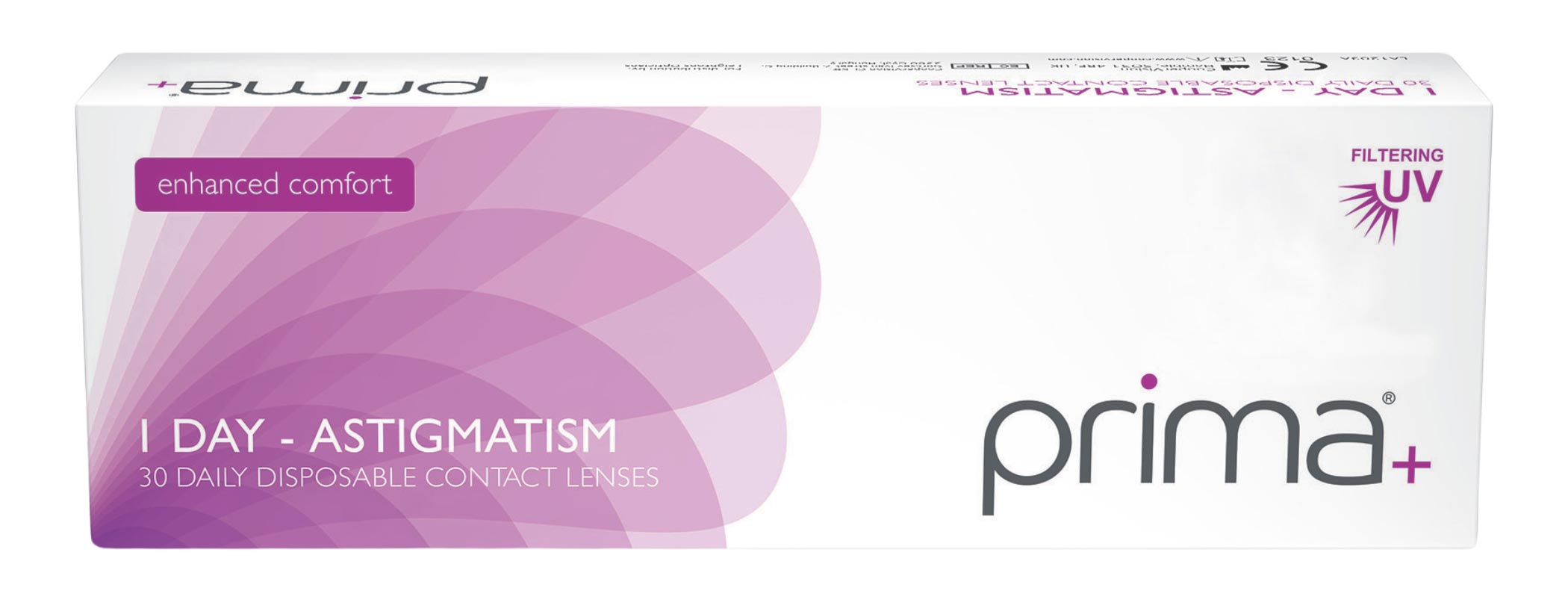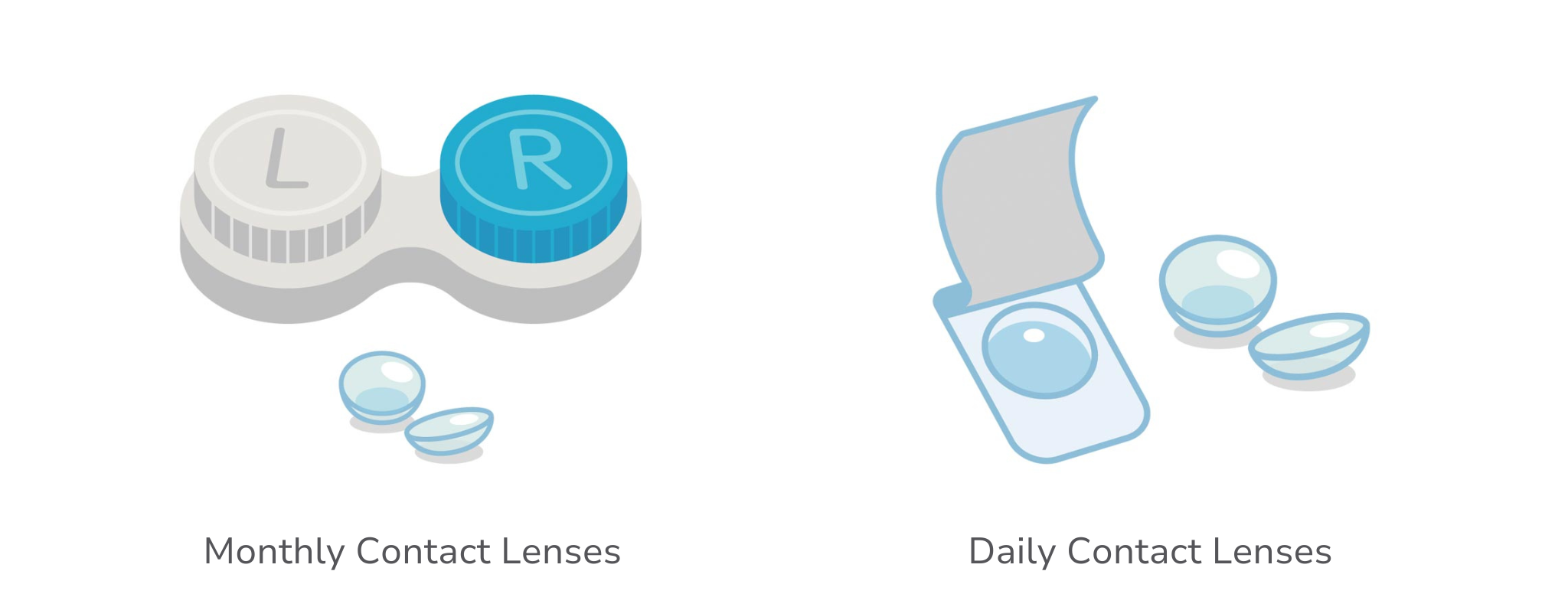
So you’ve decided to switch to contact lenses. Whether for convenience or for aesthetics, everyone who chooses to wear contacts does so for their own reasons. But one question on many people’s minds when they make the switch is “are monthly or daily contact lenses better?”
Both types of contact lenses are widely used and have unique benefits depending on the wearer’s lifestyle, preferences, and eye health. In this guide, we’ll go over the key differences, pros and cons of each type, and how to choose the best option for your needs.
1. What are daily and monthly contact lenses?
Daily contacts are designed for one-time use and are disposed of at the end of the day. A fresh pair of lenses are used everyday. Unlike monthly lenses, there’s no need to clean and store your contacts every night making them a convenient option for those who like to be active and travel a lot.
Monthly contact lenses typically last 30 days and can be worn repeatedly before needing to be replaced. Every night you need to clean and store them to ensure they stay clean and don’t damage your eyes with bacteria or debris.
Both types of contact lenses are available for a variety of different vision corrections including short-sightedness, long-sightedness, and astigmatism.

2. Convenience and ease of use
Many contact lens users find them more easy and convenient to use over glasses as they don’t need to be cleaned over the day and won’t slip down your nose while you’re reading. They also don’t steam up so they’re ideal to wear while playing sports and allow you to wear any style of sunglasses you choose.
- Daily Lenses are single use options that are extremely convenient as they require no cleaning or maintenance. All you have to do is put them in and go. Great for busy lifestyles and travel. Simply wear them for a day and discard.
- Monthly Lenses offer long-term use but require daily cleaning and storage in a sterile solution. Suitable for people who are comfortable with a maintenance routine. They are often available in a far wider range of prescriptions to suit more people.
3. Comfort and eye health
Contact lenses have come a long way in terms of comfort. Most modern-day lenses are either made of a material called hydrogel or silicone hydrogel. Silicone hydrogel allows up to five times more oxygen to reach the cornea, keeping the eyes healthy and comfy for longer.
- Daily Lenses are often made of a thinner material than monthlies or silicone hydrogel. They’re soft and pliable and help your eyes “breathe” better. Additionally, since a fresh pair is used every day, there’s less risk of protein or debris buildup on the lenses, making them a better option for people with sensitive eyes or allergies.
- Monthly Lenses are made from more durable materials designed for everyday wear, but may cause discomfort if not cleaned properly. You will require a contact lens cleaning solution as well as a way to store them between wears. Some people experience dry eyes or irritation over time with extended-wear lenses. Learn more about dry eyes.
4. Which is more affordable?
Affordability is a topic on everyone’s minds when they’re looking into getting contact lenses. Thankfully, there are options to suit many budgets.
- Daily Lenses are often ordered through your optician on a subscription and you will receive a bulk order each month. Because you are using a new pair everyday, they are often more expensive for full time wear, however, no cleaning supplies are needed, which can offset some of the cost.
- Monthly Lenses are usually more affordable initially as a single pair lasts for an entire month, but additional costs for cleaning solutions and cases should be considered. These are also typically available via a care plan subscription for home delivery in 3 or 6 monthly cycles.
5. Environmental impact
If you’re conscious about your impact on the environment, the contact lenses you choose might be influenced by this as one type generates more waste and requires more energy to make than the other.
- Daily Lenses – because they are discarded daily, this creates more waste overall. Both in terms of packaging and actual lenses. This could be a determining factor for the more eco-conscious wearer.
- Monthly Lenses – You require fewer pairs overall which means less waste is generated over time, making them a more eco-friendly option. However, the need for cleaning solutions and storage cases adds to the overall environmental impact.
If you’re concerned about the impact on the planet of wearing contact lenses, you’re in luck. There are contact lens recycling schemes where you can safely and eco-consciously recycle your contact lenses.
6. Which option is best for your lifestyle?
Your lifestyle will probably have a big impact on whether you choose daily or monthly contact lenses.
- Daily Lenses can be ideal for those who only wear contact occasionally such as to a big event like a wedding or job interview. People with allergies might find dailies to be more gentle on sensitive eyes as well, and those who prefer a low-maintenance option might find the simple application and disposal of these lenses preferable.
- Monthly Lenses are great for those who wear contacts regularly for work or school and who are comfortable with the required daily care routine of cleaning and storing the lenses. They are often less bulky to travel with as you don’t need to take multiple pairs with you (although you will need to make sure you have cleaning and storage solutions). They’re also ideal for those who want a more cost-effective solution.
7. Can you switch between daily and monthly lenses?

Yes, you can switch between daily and monthly contact lenses. Many wearers will switch between both types depending on their needs. For example, daily lenses might be more convenient for travel where taking the cleaning solutions might be inconvenient. Monthly lenses are better for regular wear every day.
Contact lenses differ in material, as well as certain measurements such as base curve and diameter. They also have different wear and care requirements. Your optometrist should check the suitability of the different types of contact lenses and whether switching between them is okay for you. They will also advise on cleaning and storing the lenses for the safest experience.








